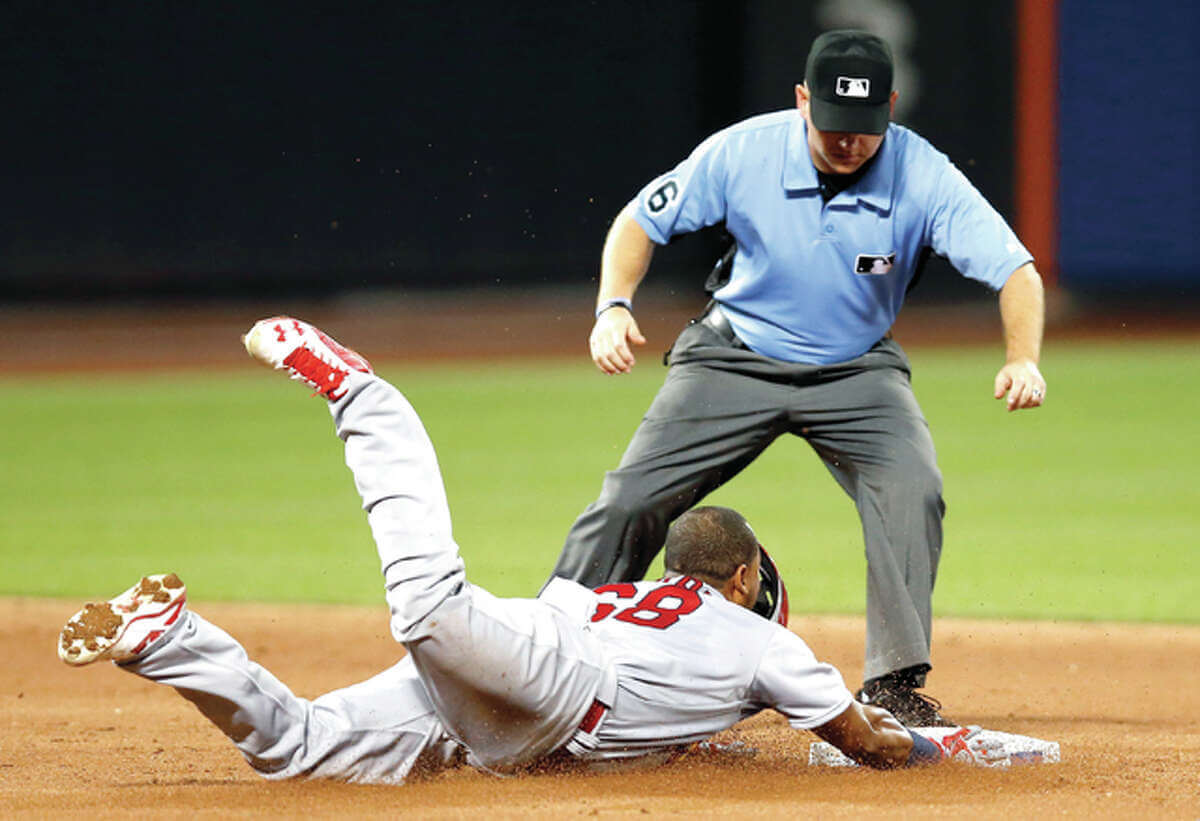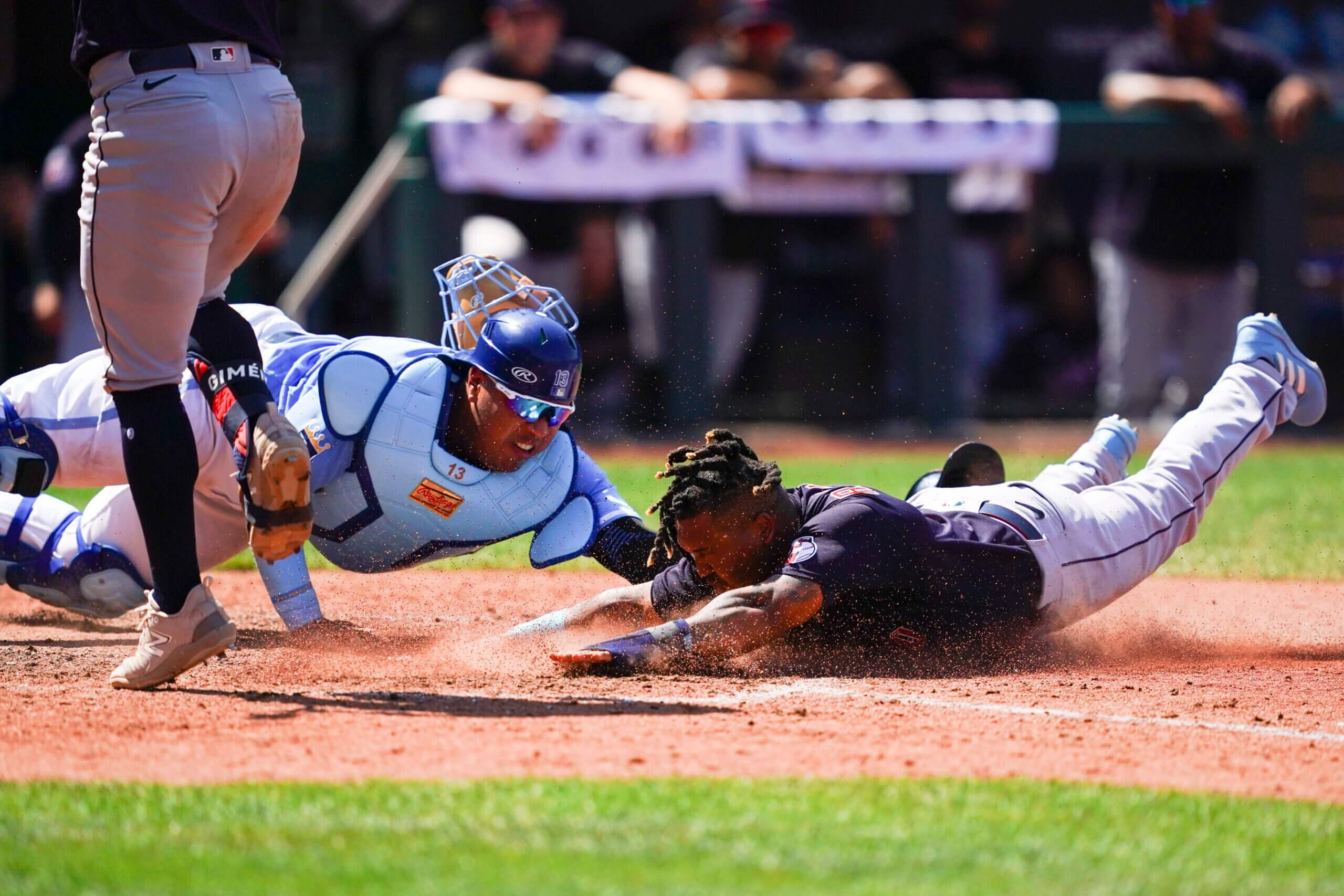An unearned run in baseball is a run that scores due to an error or misplay by the defense, rather than as a result of hits, walks, or hit batsmen by the offense. It is considered “unearned” because the run would not have scored without the aid of the defensive mistake.
Unearned runs differ from earned runs, which are runs that score without any errors or misplays by the defense. Earned runs are runs that are fully enabled by the offensive team’s hits, walks, sacrifice flies, and other production.
The key distinction is that unearned runs are at least partially attributable to mistakes by the defense, rather than solely the result of offensive performance. While earned runs reflect the strength of a pitcher and defense, unearned runs isolate defensive deficiencies.
How Unearned Runs Occur

Unearned runs in baseball occur when a runner advances or scores due to an error or misplay by the defense, rather than from hits or walks by the offense.
The most common causes of unearned runs are:
-
Fielding errors that allow a runner to advance or score. For example, if an error allows a runner on first base to reach third base, and then the next batter drives him in with a sacrifice fly, that run would be unearned.
-
Fielder’s choice, passed balls, catcher’s interference or any defensive mistake that allows a runner to advance. If a runner reaches base on a fielder’s choice and later scores on a hit, the run is unearned if they would have been out without the fielder’s choice.
The key is that the runner was able to advance and eventually score due to a mistake by the defense, not because of hits, walks, or other offensive achievements. Unearned runs are charged to the pitcher’s ERA, even though the mistakes were defensive and not pitching-related.
Unearned Runs and ERA
Unearned runs do not count against a pitcher’s earned run average (ERA). ERA is one of the most important stats for evaluating a pitcher’s performance and only earned runs are used in its calculation.
An earned run is any run that scores without the contribution of an error or a passed ball. It reflects runs that likely would have scored even with flawless fielding. In contrast, unearned runs count as runs against the team but do not get counted as earned runs against the pitcher. This is because the pitcher is not considered responsible for allowing runs that scored due to fielding mistakes or passed balls.
The distinction between earned and unearned runs allows ERA to more accurately reflect a pitcher’s skill. A pitcher’s ERA would be artificially inflated if unearned runs were included. By excluding them, ERA focuses on runs that can be attributed to the pitcher’s own performance. This provides a better metric for comparing pitchers and evaluating their talent.
Importance of Unearned Runs
Unearned runs can have a significant impact on the outcome of a baseball game. Even a single unearned run can be the difference between winning and losing. This demonstrates the importance of strong defensive play behind a pitcher. An error, passed ball, or other defensive mistake that allows a baserunner can open the door for one or more unearned runs.
A pitcher’s earned run average (ERA) only counts earned runs and excludes unearned runs. So unearned runs don’t negatively impact a pitcher’s ERA statistically. However, they still can cost a pitcher and their team the game. So while unearned runs don’t hurt a pitcher’s ERA, they highlight the significance of having a strong defense making plays behind the pitcher. Unearned runs show that baseball is a team game and even if a pitcher throws a strong game, defensive mistakes can lead to runs and losses.
Famous Examples

Unearned runs have played a decisive role in many famous games and moments in MLB history.
Here are some key examples:
-
In Game 6 of the 1986 World Series, the Boston Red Sox were leading the New York Mets 5-3 in the bottom of the 10th inning. After 2 outs and no one on base, a wild pitch and error allowed the Mets to score 3 unearned runs and win the game. This paved the way for the Mets to win the World Series.
-
In Game 4 of the 2013 World Series, the Boston Red Sox benefited from 3 unearned runs due to errors by the St. Louis Cardinals. The Red Sox went on to win the game 4-2 and tie the series 2-2. They eventually won the World Series in 6 games.
-
On September 25, 2008, the Pittsburgh Pirates set a modern MLB record by allowing 11 unearned runs against the Chicago Cubs. The Cubs went on to win the game 20-6.
Unearned runs in key moments can completely swing the outcome of a game and series. While they may seem like random chance, unearned runs have shaped MLB history in dramatic fashion.
Records and Statistics
Unearned runs have been tracked in Major League Baseball since the late 1800s.
Some notable MLB records related to unearned runs include:
-
Most unearned runs allowed in a season: 122 by the 1899 Cleveland Spiders
-
Most unearned runs allowed in a career: 1,063 by Phil Niekro
-
Highest single season unearned run average: 4.17 by Jack Powell of the 1899 Cleveland Spiders
-
Lowest career unearned run average: 0.31 by Mariano Rivera
Some notable league leaders in unearned runs allowed include:
- 2021 AL leader: Gerrit Cole – 15
- 2021 NL leader: Walker Buehler – 14
- Career active leader: Adam Wainwright – 91 (through 2021 season)
While unearned runs don’t directly affect a pitcher’s ERA, they can still have a significant impact on the outcome of a game. Tracking unearned run statistics and leaders provides insight into a pitcher’s defensive support and luck over time.
Strategy Around Unearned Runs
Managers and coaches can employ certain strategies to try to minimize the impact of unearned runs on their team.
Some common approaches include:
-
Pitching changes: Managers may opt to bring in a new pitcher after an error occurs to get a clean slate and prevent inherited runners from scoring. This is a judgment call based on the game situation. Some managers are quicker to pull the starter or current pitcher than others after an error.
-
Defensive positioning: Teams can shift their infielders and outfielders to make it less likely that a potential error will lead to multiple unearned runs. For example, playing the corners in with a runner on third limits the damage if an error occurs.
-
Focus on fundamentals: Coaches emphasize avoiding errors and passed balls that could lead to unearned runs. Things like fielding drills and pitch blocking practice help minimize mistakes.
The strategies around unearned runs involve damage control through pitching changes, positioning, and fundamentals. Managers try to give their team the best chance to limit the negative impacts of errors and passed balls. But unearned runs are still part of the game and have to be overcome through offensive production.
Unearned Runs in Other Sports
Unearned runs are not unique to baseball. Other sports like cricket and softball also differentiate between earned and unearned runs.
In cricket, runs scored due to errors by the fielding team are considered “extras” and are not credited to the batsman. These extras include byes (runs scored when the batsman doesn’t make contact), leg byes (runs scored off the batsman’s body), wides (balls bowled too far from the batsman) and no balls (illegal deliveries by the bowler). The bowler’s analysis does not include these extras.
Similarly, in fastpitch softball, runs scored due to errors are unearned and do not count against the pitcher’s ERA. Other sports like basketball, soccer, and hockey do not make this distinction between earned and unearned points/goals. The credit or blame is usually placed on the whole team.
Baseball’s granular stats around earned and unearned runs are unique. However, the general concept of differentiating between “legitimately” scored points and those enabled by errors exists in some other sports too.
Arguments Around Unearned Runs

The concept of unearned runs has sparked debate among baseball analysts and fans over the years.
Some of the key arguments around unearned runs include:
-
Unearned runs can unfairly impact a pitcher’s ERA. For example, a run scored after an error is out of the pitcher’s control, yet it still counts against their ERA. This has led some to argue that unearned runs should not factor into a pitcher’s ERA at all.
-
The criteria for what counts as an unearned run is inconsistent. For instance, runs scored after a passed ball are considered unearned but runs after a wild pitch are earned. This arbitrary distinction has been criticized.
-
Some argue the concept of the unearned run should be eliminated entirely, since pitchers are still somewhat accountable for baserunners who reach on errors. However, others counter that errors are out of the pitcher’s control and thus runs resulting from them should not be “earned.”
-
There have been suggestions to modify the unearned run rule, like making unearned runs count partially towards a pitcher’s ERA. But changes like this have not been adopted by MLB.
Overall, while the unearned run stat aims to separate pitcher accountability from fielder errors, the nuances around what counts as “unearned” remain debated. The stat continues to impact pitcher strategy and evaluation despite criticism from some analysts.
Summary
An unearned run in baseball is a run that scores without the defensive team making any errors or mistakes. Unlike earned runs, unearned runs do not count against a pitcher’s ERA (earned run average). This is because the runs are deemed to be the fault of the defense, not the pitcher.
Tracking unearned vs earned runs is important in baseball statistics. An unearned run can significantly impact a pitcher’s ERA, which is used to evaluate pitching performance. A high ERA due to unearned runs may not accurately reflect a pitcher’s talent or ability. Therefore, separating earned runs from unearned runs provides a clearer picture of a pitcher’s effectiveness.
In summary, an unearned run in baseball occurs without defensive errors and does not count against a pitcher’s ERA. Carefully tracking unearned vs earned runs allows for better statistical analysis and evaluation of pitching talent. This distinction highlights the importance of competent defense in preventing unearned runs.








